TUMGAD
Exercise generation and helpful materials for the Introduction to Algorithms and Data Structures 📚
AVL Trees
AVL Trees (names after Georgy Adelson-Velsky and Evgenii Landis) are balanced binary search trees. They solve the problem of binary search trees mutating into lists:
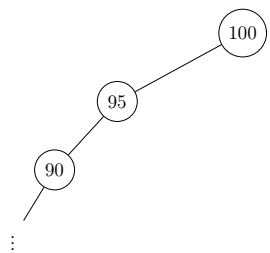
To achieve this, the trees manage so-called balances of their sub-trees which are calculated by subtracting the right sub-tree height from the left.
An example AVL Tree with every node’s balance in red:
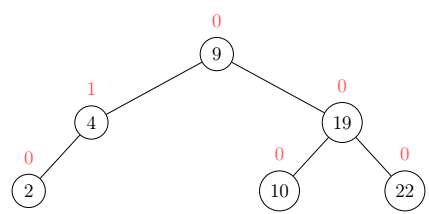
If the balance of any node reaches a threshold of 2, rebalancing in the form of rotation is in order. The kind of rotation needed is determined by the balances:
| Parent balance | Child Balance | Rotation |
|---|---|---|
| 2 | 1 | right |
| -2 | -1 | left |
| 2 | -1 | left-right |
| -2 | 1 | right-left |
Insert
Insertion into an AVL tree works just like in a BS Tree, just remember to keep track of the balances.
Example: Insert 1 into the above tree:
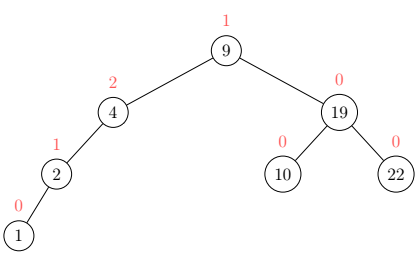
As you can see the node with value 4 has a balance of 2 and its child node a balance of 1, thus a right-rotation is needed to satisfy the tree conditions:
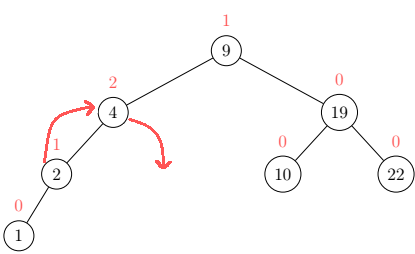
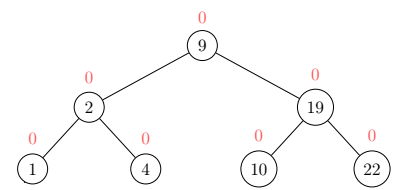
Deletion
Deleting a node from an AVL Tree is sometimes slightly more complicated. If the node is a leaf, you simply remove it, update balances and re-balance if necessary.
If the node is not a leaf, you switch it with its in-order predecessor (i.e. the maximum node in the left subtree), remove the node you want to remove (as it is now a leaf), update balances and re-balance if necessary.
Time Complexity:
| Access | Search | Insertion | Deletion |
|---|---|---|---|
O(log n) |
O(log n) |
O(log n) |
O(log n) |